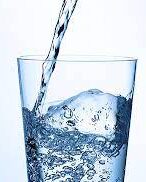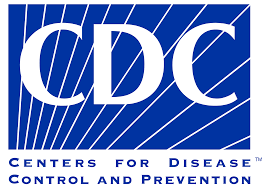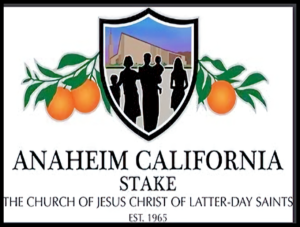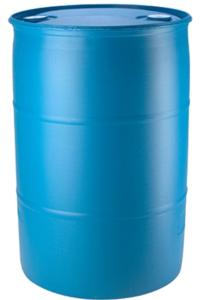Examples of Water Bottle Expiration dates:
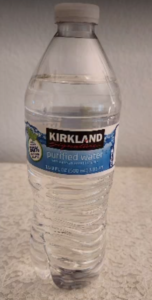
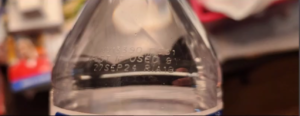
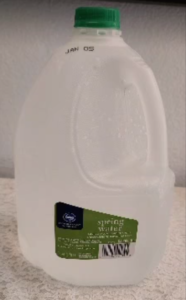
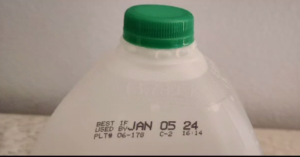
WarningS:
How long can normal bottled water and tap water be stored safely?
Normal Tap Water stored in a clean bottle (6 months): can be stored safely for up to 3 to 6 months depending on the container and exposure to sunlight and extreme heat.
Water in plastic bottles: Certain chemicals found in plastic can leach into bottled water over time, which could potentially damage your health. Thus, it’s probably best to avoid commercially bottled water that’s far past its expiration date.
When you’re using plastic containers, never store water in them for longer than 6 months, and keep a close eye for when it starts to become discolored, or cloudy or for any signs of contamination that will make it harmful for consumption. At that point follow the instructions on the CDC PDF on how to make it useable.
Water exposed to fuel, toxic chemicals, or radioactive materials it will not be made safe by boiling or disinfection.
Self-made bottled water: The best options for self-made water storage are 2-liter soft drink bottles, juice bottles, or containers made specifically to hold drinking water. More information on how to do it. Go toward the end of this web page on how to safely make your own bottled water that is generally good for 6 months.
Commercially bottled water (1+ years): It is recommended that you purchase commercially bottled water with an expiration date of at least 1 year on the bottle for the most cost-effective method of water storage. Then rotate and replace them with regular use.
Keep bottled water in its original container, and do not open it until you need to use it. Store bottled water in the original sealed container, and observe the expiration or “use by” date. This usually means at least 1 year from the date of purchase, but check the expiration date to confirm.
On small bottles of water, the expiration date tends to be nearly invisible, it is usually near the top area in a transparent silver color. (See photo as an example.)
Warning: If the bottled water has no expiration date. Then do not purchase bottled water. There are some bottled water offerings at Dollar Stores and other discount places that are already about to expire and/or have no expiration dates to determine the expiration on it.
Commercially sold “Emergency Drinking Water Rations” (5 years): It will last significantly longer than normal “bottled water”. Follow the expiration date on the water container. Usually good for up to 5 years shelf life even in extreme conditions.
Tap Water: It is recommended to replace water that you made from Tap every 6 months.
Making your own Bottled Water – 6 months
Self made bottled water for storage: Using Soda Pop 2 – Liter Bottles or Juice Bottles:
WHAT CONTAINERS CAN BE USED TO STORE WATER?
- Water should be stored before a disaster occurs, in thoroughly sanitized food-grade plastic or glass containers with tight-fitting lids. Food-grade plastic containers will not transfer harmful chemicals into the water or food they contain. Examples include containers previously used to store beverages, like 2-liter soft drink bottles, juice bottles, or containers made specifically to hold drinking water. If you are going to purchase a container to store water, make sure it is labeled food-grade or food-safe.
- To sanitize containers:
- First, wash the inside and outside of each container with soap and hot water.
- Next, sanitize containers with a solution of 1 teaspoon of non-scented household bleach per quart of water. Close the container tightly and shake well, making sure that the bleach solution touches all of the internal surfaces of the container. Let the container sit for 30 seconds and pour the solution out.
- Finally, rinse thoroughly with plain clean water.
- Avoid using milk containers because they can be hard to clean. Bacteria can grow quickly in a milk container, contaminating the water stored in it. However, if there is no alternative, special care should be taken when sanitizing these containers.
- Avoid using bleach containers for drinking water storage because they are not made of food-grade plastic. Water stored in them to use for washing could mistakenly be used for drinking, with serious consequences.
DO I NEED TO DISINFECT (ADD CHEMICALS TO) THE WATER?
- If your drinking water comes from a public supply, no chemical disinfectant is needed. An exception is if an emergency “boil water” notice has been given, in which case you would need to disinfect the water before storing it (see below).
- Although properly stored public-supply water should have an indefinite shelf life, replace it every 6 to 12 months for the best taste.
- If the water you are storing comes from a private well, spring, or other untested source, purify it before storage to kill pathogens (see below).
HOW SHOULD WATER BE STORED?
- After containers have been filled with clean water, mark them with the words “Drinking Water” and indicate the date of storage.
- Direct heat and light can slowly damage plastic containers, resulting in eventual leakage, so they should be stored in a dark, cool, and dry place.
- Container caps should be tightly secured.
- Store water away from gasoline, kerosene, pesticides, or similar substances because vapors from these materials can penetrate plastic.
- Water can also be stored in a freezer. Frozen water provides the added benefit of helping to keep frozen food cold for a longer time if power is out for an extended period. Use only plastic containers to store water in a freezer, as glass may not be able to withstand the pressure of expanding ice.
HOW IS WATER KEPT SAFE ONCE A CONTAINER IS OPENED?
- To minimize exposure to bacteria, open a container just before use and then refrigerate it if power is available. If no refrigeration is available, keep the container up high, away from children and pets.
- Use water from opened containers within 1 to 2 days if possible.
WHEN IS THE DISINFECTION OF WATER NECESSARY?
- If your drinking water comes from a public supply and a “boil water order” has not been issued, you can assume that it is safe to drink.
- If there is any possibility that your water source has been contaminated, do not use it for drinking, preparing food, making ice (if you have electricity), or brushing your teeth. If you have any open cuts or wounds, do not use it for bathing.
- Sometimes the appearance of water can be a reason for concern. If water appears murky or has a foul taste or smell, it is likely that it is contaminated. Do not consume this water; use an alternative clean source instead.
55 Gallon water storage ideas
You can purchase a 55 55-gallon blue Water Barrel and add water treatment. Then storage if possible in a shady and cool area. Using water treatment and being sure to have a tight close to avoid air entering the system the water can stay clean for up to 5 years.
Purchase the equipment below and follow the water treatment instructions.
55 Gallon Drum – Purchase fillup and forget for up to 5 years
Notice: Links to purchase are recommended by Amazon, not the church or stake.
Feel free to shop around and purchase suggested items at your own discretion.
[Please watch
video to better determine which water pump/siphon you wish to purchase.]
2. (Option 1)
Water Siphon Hose – for small amounts of water and lasts longer than a water pump.
3. (Option 2)
Water Pump – for large volumes of water to be removed, not suitable for small amounts of water
Videos on Ideas and Setup of 55-Gallon Drums
- Video – Basic setup of 55 Gallon water storage
- Video – Long-term ideas and concerns about the storage of water
- Video – How to use a Siphon and Water Pump and great suggestions on the 55 Gallon Water Barrels for small amounts of water removal.
HOW to long-term STORE the water drum?
- Do not place directly on pavement or concert
- Keep in a stable and cool environment
- Avoid excessive heat on the drum, do not place it near the water heater or other things that may heat up the water.
HOW IS WATER KEEP SAFE ONCE transferred to use?
- To minimize exposure to bacteria, transfer water only when needed to a clean container just before use and then refrigerate it if power is available. If no refrigeration is available, keep the transferred water up high, away from children and pets.
WHEN IS THE DISINFECTION OF WATER NECESSARY?
- Follow the instructions on the water treatment that you added to the 55-gallon drum of water. The newer treatments can keep the water clean for multiple years. If water is cloudy, murky, and/or smells bad. Then follow the CDC instructions – PDF on cleaning the water.
Garden Water – Advanced multiple 55-gallon storage systems connected together
- Good Video – Ganging 5 Rain Barrels for Gardens and Cleaning Fresh Water
- Shows you how to combine 5 Rain Barrels for water storage – keep in mind this is not for drinking water.
- Using some easy-to-find plumbing fittings you can gang together any number of rain barrels to increase irrigation sources for gardens in out-of-the-way areas.
- Parts list for ganging 5 water barrels
- 5- 3/4 inch PVC Bulkhead Fitting
- 5- 3/4 inch x 3/4 inch x 3/4 inch Tee Fittings
- 8- 3/4 inch Male Adapters
- 1- 3/4 inch Male Plug
- 1- 3/4 inch shut-off valve
- 1- 3/4 inch male pipe thread to male hose thread adapter
- 1- 10′ length of 3/4 inch PVC pipe
- 1 can of PVC primer/cleaner
- 1 can of PVC cement every kind of downspout diverter you desire. They make them in many different varieties.
